Written by Guest Contributor on The Prepper Journal.
Editors Note: A guest contribution from Luna Anderson to The Prepper Journal. As always, if you have information for Preppers that you would like to share and possibly receive a $25 cash award, as well as being entered into the Prepper Writing Contest AND have a chance to win one of three Amazon Gift Cards with the top prize being a $300 card to purchase your own prepping supplies, then enter today!
A topographical map of the Western United States of dry river beds, creek beds and washes would like like the worlds worst varicose-vein outbreak and one of the Eastern United States would only look better because they have more trees to hide them. Anyone who has been to the Continental Divide knows that all the run-off from rains and snow melt West of the Divide eventually get consumed by man or ends up in the Pacific Ocean. That which falls on the east goes to the Atlantic Ocean or the Gulf of Mexico. Simple generalized truths (though not a single drop of the Colorado River, which flows through the Grand Canyon, ever makes it to the ocean.)
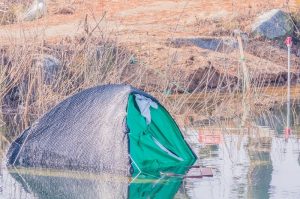
What we preppers should be aware of is that this natural pattern can generate flash floods almost anywhere and at most anytime and they are, of course, extremely dangerous. A storm off into the mountains miles and miles away can generate a deluge that will sweep away anything in its path. Unheard until maybe it is too late, often mistaken for the sound of a changing wind, caught perhaps less aware because we turn our senses of survival down a few decibels when we have made camp and settle in for the night.
And admittedly there is a draw to these very places as campsites as they offer some protection from the winds, may offer a gentle fresh water source, and even may have a tree-line that serves as a further wind-break as well as shade, a cache of firewood, or a place to trap small game.
So, whether you are just camping, practicing survival skills, or really trying to get off the grid for a reason, a flash flood can occur most anywhere, and at anytime of the day or night where you have to deal with a riverbed, a creek bed, a brook, a stream or a wash.
If you are a smart camper, you already know to stay above the water level when camping near large bodies of water and to take the necessary precautions to secure your site. If you have taken all of these precautions and the flood line rises, which it can and will do steadly and almost silently in most case, you might still be in trouble.
In this article, you will learn what to do when a flash flood does strike and how you can deal with the available resources to help you survive the flood and save as much of your possessions as possible. Having the knowledge to detect and survive a flash flood can be the difference between life and death.
I have heard often that ‘flash floods are extremely dangerous and they cannot always be predicted. You might be in a dry area, but if the rain is pouring a couple of miles away upstream, you might be faced with the challenge of your life.” I think most preppers would scoff at this logic as “prepared” means in-tune with your surroundings.
Understand the Weather
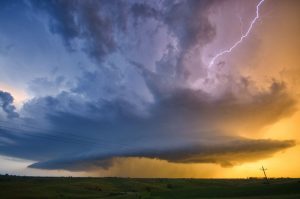
Understanding the weather of the area that you are camping in is essential. As with any life-threatening event, the best way to survive a flash flood will be to avoid it altogether. By studying the weather of the area and checking to see if there is any rain predicted if you are just camping, is an acceptable method – assuming you are there for just the period predicted. But weather prediction is NOT an exact science yet. Knowledge is power and knowing what rain and snow clouds look like as opposed to following the predictions of someone in a studio hundreds of miles away who has gone home for the weekend will go a long way to making your weekend trip enjoyable or your survival last a few more days.
Understanding the weather means you understand the topography of the region as well. Putting up camp above a river that is flowing away from you down into its drainage area is simple common sense. Additionally, staying out of the flood line where the water has previously pushed to is of paramount importance as well.
Find Out How Far the Drainage Area Extends
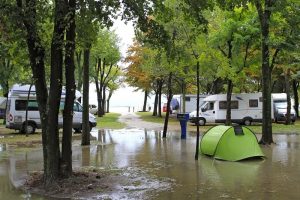
Before setting up your camp, you should attempt to find out how far the drainage area of the river or body of water extends. This will enables you to see which spot is the least likely to get water or even face the grunt of the flood. If it is an established campground that is or was under some type of government management, this data is available, often posted on boards in the area, if one remains and the information remains as well. If not, a survey of the land slope, similar to what a golfer would do on a long putt, is a good exercise. Look near and close for indications of past water flows, sand or rocks or debris accumulated in spots, depending on what the general land cover is made of; look far and wide for mountains, foot hills or higher grounds that might produce a sudden flow from storms far away. These form the “feedings” of a flood plain.
The “feeding” is part of the drainage and it is important to understand the size of the rivers feeding the area. If large rivers are feeding it, you will have a bigger chance of danger, while these smaller rivers are usually a little tamer. All bets on this are off in a downpour. Understanding this tip is crucial when camping, especially in the rainy season, or during snow melt.
Always Consider Higher Ground
It is important to consider camping on higher ground as this will allow you to stay clear of any potential flooding dangers. Most parks are designed with camping spots that are out of the danger zones and you should stick to these camping areas if they are available, albeit they will draw other people as well. If you are camping with your family or others, maybe you have set up a large tent, or a group of smaller tents, no matter, just always seek the highest possible point when flash flooding or rising waters is a possibility.
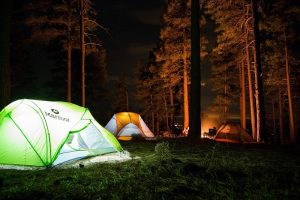
Cliffs and ridges are perfect and they are found next to many rivers. If backpacking is your style, it may be better to continue walking if you think that mountains might be nearby as they will provide higher ground, perhaps a little colder, but safer.
Stay Alert
I know I am stating the obvious but you will be able to react much more safely once you notice the water level rising or the water running a little faster. THIS is when it will be a wise decision to start moving instead of taking the chances and camping in the danger zone or simply watching because it “looks cool”. While we are not suggesting someone stay awake all night in a camping excursion, it definitely is something to consider if you are in a danger zone, from the weather or other things that go bump, or not just camping for fun.
Most parks will let you know if there are potentially any floods and this can also be crucial to save you. One other issue, all water sources are used by the “local inhabitants”. It is wise to be aware of the possibility of being caught in between dangerous animals and their natural habitats. Alert is never a bad thing.
Setup Escape Routes
In this step, planning is key and having a way out is something to always keep in mind. Before heading to bed, you should walk around the camping site to see if you find any escape routes. Your escape routes should be on solid ground as weaker ground might be broken and disturbed if you are caught in a flash flood. After scouting these routes, any obstructions should be removed and you should notify all the other camper of the best way to escape the area if a flash flood should occur.
You should tell your family and friends about the escape plan if it rains too heavily in the campsite. Pick several safety meeting spots and make sure everyone know how to get to these locations, so all the members can gather after the disaster. And make sure that every member of the party knows that risking their lives to save a replaceable piece of equipment is the WRONG thing to do. This can not be over stressed. Always move higher and away from the water flow.
Avoid running through moving water since it can put your life at risk. You can’t predict the current, it’s always stronger than it appears, and your can’t see the river-bed obstacles and the rushing debris. Wide equates to shallow when it comes to a river. A river is widest where it is the most shallow, and deepest where it is most narrow. Like pipes in fluid mechanics, the waters speed is fastest where most contained (narrow) and slowest where least constrained (wide). Note that even a slight current can sweep away everything in its way.
Stay Away from Flood Areas
As I have already mentioned, the best way to survive a flash flood is to stay away from the “zone”. With so many great camping areas in the US, it is better to start searching for a secondary camping location. This will ensure your safety and keep you out of possible danger.
If you are camping in a danger zone, again, you should remember to always leave the floodwater, move away from it uphill. The ground around rushing water might be loose and this could be extremely dangerous. It is important to explain this to your children as well to help them stay clear of any potential danger as well.
In Conclusion
Flashfloods are unpredictable and they have cost many people their lives. Many people have also disappeared in the midst of these floods and staying away from them is the best answer to survive. If you loose everything and need help, please first stay put where you have found safety and constantly assess the safety or where you are, things can change rapidly. If you still have a phone with a signal please call your local Red Cross chapter or any emergency offices. These coordinators will send some saviours to get you out of the flooding area as soon as it is possible.
Your should always remember that your life is far more valuable than your belongings. If the flood comes in, please run and don’t look back. It could cost your life if you stay in your tent and look for expensive things to take along.
Last but not least, when you return to your campsite after a flood, you should stay away from muddy areas and of course any down electrical lines. They are extremely dangerous. I hope that these tips will help you better prepare when you go camping; always prepare for everything in advance and I wish you a happy camping experience every time.
Author Bio:
Luna Anderson is avid camper from Phoenix, Arizona. She loves the outdoors and she wants to show people the endless possibilities of this world and open their minds to experiences over possessions. You can find practical tips about hiking, camping and survival skills in her blog hikertrack.com.
The post How To Avoid A Flash Flood While Camping appeared first on The Prepper Journal.
from The Prepper Journal
Don't forget to visit the store and pick up some gear at The COR Outfitters. How prepared are you for emergencies?
#SurvivalFirestarter #SurvivalBugOutBackpack #PrepperSurvivalPack #SHTFGear #SHTFBag

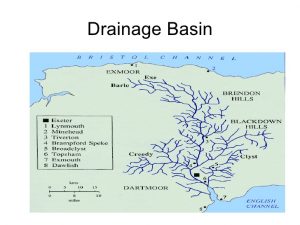
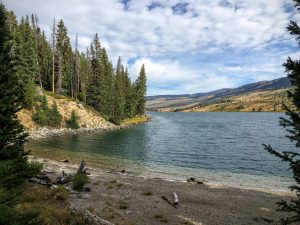
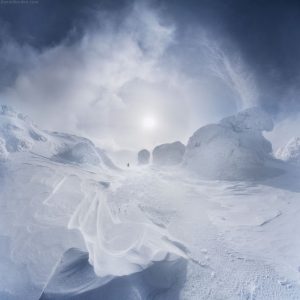
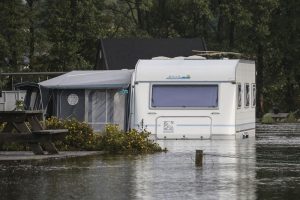
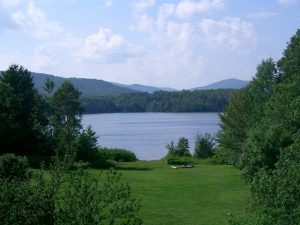
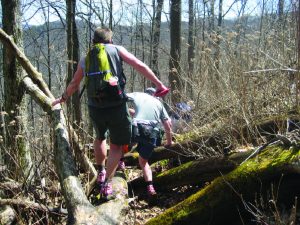
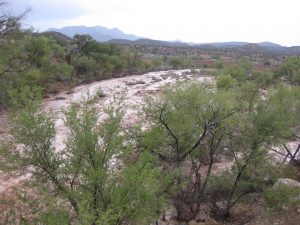
No comments:
Post a Comment